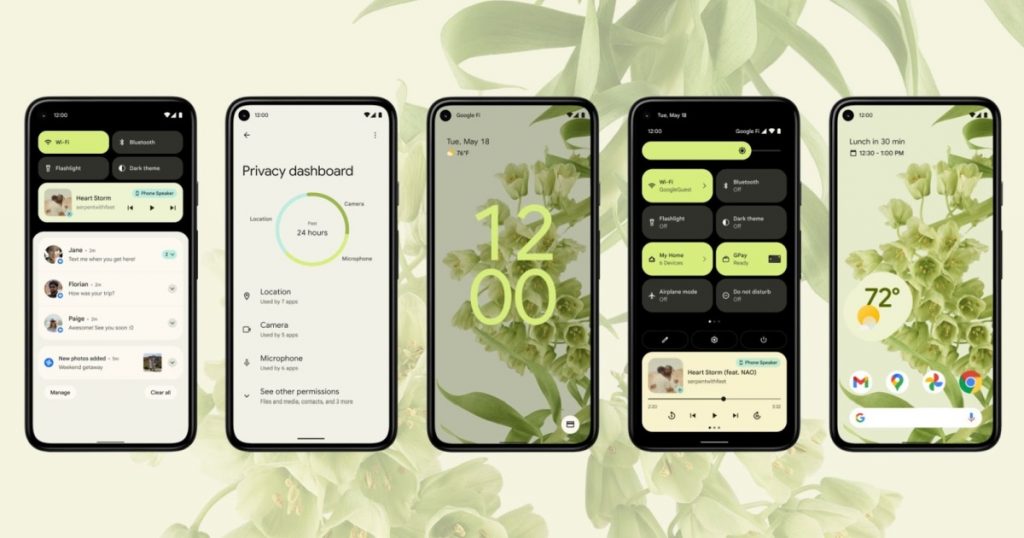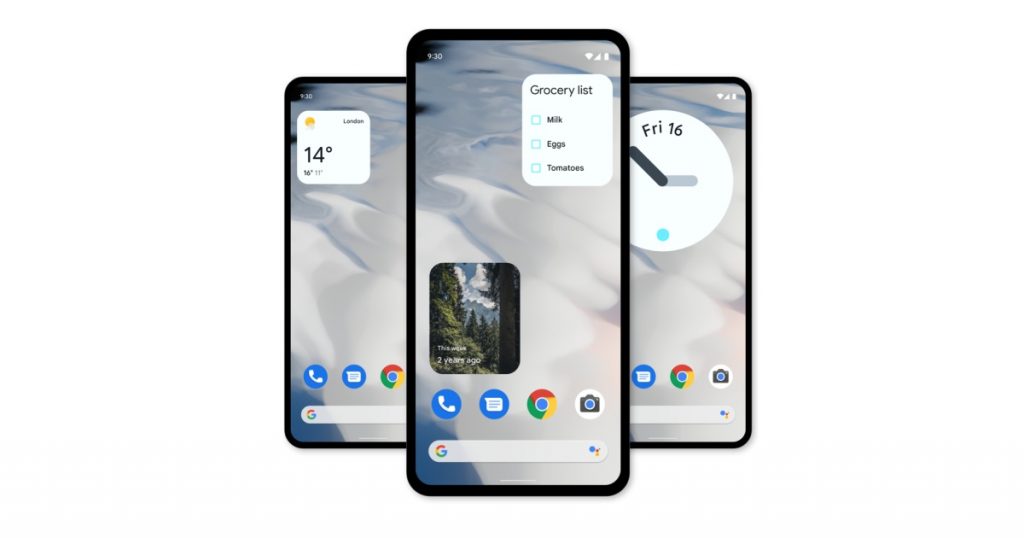Last Updated on October 7, 2021 by Asif Iqbal Shaik
Whenever Google drops the latest version of Android to the AOSP (Android Open Source Project), it is accompanied by a new hardware launch. However, this time around, the search giant has broken its tradition. It neither launched a new smartphone nor released the latest software for existing Pixel phones. It did, however, reveal plenty of details regarding Android 12. For starters, the newest version of Android has been tested by over 225,000 people across the globe. Google has ironed out more than 50,000 bugs to improve the experience. Android 12 brings a fresh UI design and performance optimisations to the table. Some of the major ones are as follows:
Android 12 Brings New ‘Material You’ Design

Subscribe to Onsitego
Get the latest technology news, reviews, and opinions on tech products right into your inboxThe latest iteration of Android comes with a weirdly named ‘Material You’ UI design language. According to Google, its new vision for aesthetics will help developers create better-looking apps with dynamic colours that match the device’s wallpaper and UI colour theme. The UI also offers smoother transitions and Windows Aero-like frosted glass effects.
Notification System Undergoes a Revamp
The current Android notification panel looks cluttered because each app gets to paint its layout. To fix this issue, Android 12 will apply a standard template to all notifications. As a result, users will be presented with a more cohesive aesthetics.
Widgets Get a Much-Needed Makeover

Widgets have been a part of Android for more than a decade. However, they don’t get updated frequently. With Android 12, Google has drastically changed the design of widgets. These now sport minimal design, rounded corners, and a subdued colour palette. According to the search giant, the newly designed widgets are responsive and play nice with various display sizes. That’s great because they will scale well on smartphones, foldable devices, and tablets.
A Significant Performance Boost
As per Google, Android 12 is faster than its predecessor right from the boot. Your next phone running the latest version of Android should offer faster startup time and app loading. The search giant claims that Android 12 reduces the “CPU time used by core system services by 22% and the use of big cores by 15%“. The latest build is also optimised to squeeze the best performance out of machine learning.
You can learn more about Android 12 and all the new features and improvements coming with the Android 12 update by clicking the link below.
Must Read: All Android 12 Features: Over 60 Features Explained
Android 12 Release Date
Although Google has released Android 12, you won’t see it on your Android smartphone or tablet right away. It will be available on the next Pixel smartphones—Pixel 6 and Pixel 6 Pro—that are scheduled to break cover on October 19, 2021. Google will release Android 12 to older Pixel smartphones around the same time.
Android 12 will then start showing up on devices from ASUS, Motorola, OnePlus, OPPO, Realme, Samsung, Tecno, Vivo, and Xiaomi beginning at the end of 2021.
- ASUS: The Taiwanese firm has started recruiting beta testers for Android 12 on the Zenfone 8.
- OnePlus: OnePlus has already released the Android 12 Beta update to the OnePlus 9 and the OnePlus 9 Pro.
- OPPO: The Chinese firm will launch the Android 12-based ColorOS 12 update on October 11, 2021, in China.
- Realme: The company has announced that the Realme GT 5G will be the first phone to get the Android 12-based Realme UI 3.0 update. The company will unveil Realme UI 3.0 on October 12, 2021. The update will be released at a later stage, depending on the smartphone model and the country where you live.
- Samsung: The South Korean smartphone giant has already released the Android 12-based One UI 4.0 Beta update to the Galaxy S21 series. The stable update could be released towards the end of 2021.
- Xiaomi: Xiaomi has announced that it will release the Android 12-based MIUI update to the Mi 11, Mi 11 Pro, Mi 11 Ultra, Redmi K40, and the Redmi K40 Pro first.


Discussion about this post